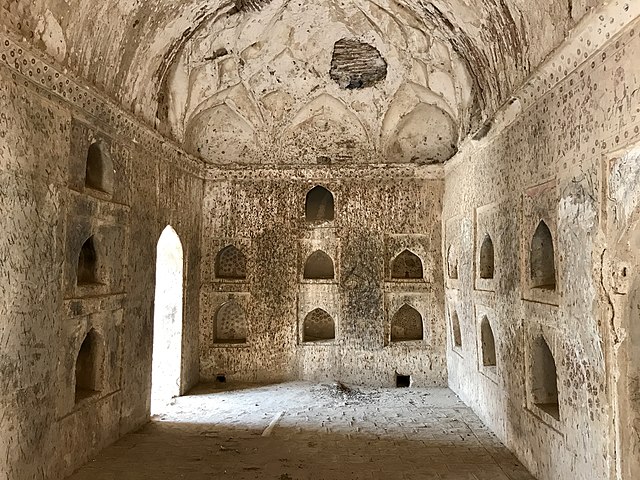The Historical and Architectural Significance of Kot Diji Fort
Kot Diji Fort, located in Khairpur, Pakistan, stands as a monumental testament to the architectural and military ingenuity of the Talpur dynasty. Constructed between 1785 and 1795 by Mir Sohrab Khan Talpur, the founder of the Talpur Empire, this fortification not only served as a formidable defensive structure but also as a residence for the nobility of Khairpur during peacetime. Its strategic location at the edge of the Rajasthan desert, 25 miles east of the Indus River, and its proximity to the Thar and Jaisalmer Deserts, underscore its historical significance in the military and political landscape of Upper Sindh.
Get your dose of History via Email
Architectural Marvel and Defensive Strategy
The fort’s architecture and defensive mechanisms are noteworthy. A five-kilometer-long and twelve-feet-wide mud wall, complete with its own fence, encircles the city. This wall, equipped with a large iron gate as its sole entry point, exemplifies the defensive strategies employed to protect the city and its inhabitants. The fort itself, considered impregnable, reflects the architectural prowess of its creators. Interestingly, despite its formidable defenses, Kot Diji Fort has never been attacked in its entire history, a testament to its strategic location and the respect it commanded among potential adversaries.
The Role of Kot Diji Fort in Regional Politics
The construction of Kot Diji Fort coincided with the establishment of the government of Upper Sindh in 1783, marking it as a central figure in the political and military affairs of the region. During times of conflict, the Zannana (women’s quarters) was transferred to Shahgarh fort, indicating the fort’s role in the broader network of fortifications and its importance in ensuring the safety of the nobility’s families. The fort’s strategic advantage was further enhanced by the construction of the Miroh Canal in 1790, which supplied water to the military bases from the western side, ensuring the fort’s sustainability during sieges or prolonged military engagements.
The British Era and Beyond
The advent of the British Empire brought significant changes to the status and utility of Kot Diji Fort. Recognized as the Nawabi State of Khairpur, its territory was drastically reduced. However, the fort continued to serve as a central military base, particularly in repelling Afghan attacks. Its significance during this era is highlighted by its designation as the most powerful among twenty forts near Talpur, a distinction attributed to its design by the Iranian architect Ahmad.
The Fort’s Decline and Preservation Efforts
In recent history, following the merger with Pakistan in 1955, Kot Diji Fort transitioned from being the personal property of the Mir of Khairpur to a state-owned heritage site. Despite this transition, the fort has suffered from neglect, leading to the deterioration of its once-majestic walls and defenses. The loss of 192 cannons and ammunition during Ayub Khan’s reign further underscores the challenges faced in preserving this historical monument.
Conclusion
Kot Diji Fort embodies the rich cultural and historical heritage of Khairpur and the broader Sindh region. Its architectural sophistication, strategic importance, and role in the socio-political dynamics of its time make it a subject of great interest for historians and archaeologists. Efforts to preserve and restore this monument are crucial in maintaining its historical legacy and ensuring that future generations can appreciate its significance in the rich tapestry of Pakistan’s history.
Source:
Wikipedia

